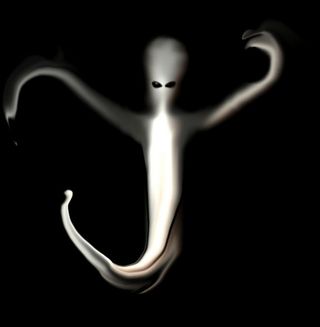Do Aliens Love Football? Two UFO Sightings Explained

Who knew extraterrestrials were football fans? UFOs were spotted in the skies above two football games in the United States in the past few weeks.
A fan at a high school football game in Scottsdale, Ariz., last weekend videoed several bright lights in the night sky. The lights weren't directly over the game itself; they were likely several miles away. Coaches, fans, and a few players saw the lights but kept focused on the game.
About a week earlier, a bright light was spotted by a television viewer of "Sunday Night Football". The viewer, identified only as by his "reedickyaluss" YouTube profile name, had noticed something odd during the broadcast: During an intro shot of the St. Louis Cathedral in New Orleans, a bright light streaked across the night sky. He replayed the scene a few times on his TiVo, and posted the video on YouTube .
At first no one thought much of the Oct. 23 video; perhaps it was a shooting star. But soon UFO buffs began examining the video. One writer, Tom Rose on Gather.com, stated that "freeze framing the clip definitely shows some kind of aircraft, with multiple flashing lights and a spherical shape, as it whizzes by at extremely fast speed. The stop-motion framing clearly shows a controlled flight of an aircraft, but it's not easy to identify it as any known kind."
In fact, the video does not clearly show a controlled aircraft (nor one with multiple flashing lights), though with a little imagination you can make anything out of it. But what was that odd, elongated light streak?
To Robert Sheaffer, a UFO researcher for Skeptical Inquirer magazine, the most likely explanation is a flying insect caught in a light. Moving objects stretch when photographed or videoed under low light conditions – for instance, the red taillight streaks in nighttime photos of moving cars – and a moving insect body can appear as a glowing rod or streak.
The insect's wing beats are rendered imperfectly by the camera's equipment as "lights" (actually brighter spots above and below the main body). This explanation is supported by the fact that the "lights" are not in the same place on the body throughout its movement; they move up or down, front or back, depending on the position of the wings at the exact moment the insect is caught in flight.
Sign up for the Live Science daily newsletter now
Get the world’s most fascinating discoveries delivered straight to your inbox.
One weakness of that theory is that the UFO appears to go behind buildings, which of course it could not do if it were a nearby bug. But Sheaffer told Life's Little Mysteries that he believes that the illusion is "a consequence of how the CCD [charge-coupled device, used in digital cameras] and the camera electronics render faint objects against a non-blank background." In other words, a glitch created by the technical limitations of the camera.
It's also worth wondering, if the unexplained light in the sky was not close to the camera (as an insect would be) but instead was above the St. Louis Cathedral, why no one else in New Orleans reported seeing it. [Why Ghosts Get Spooked by HD Cameras]
Now, what about the strange lights over the Scottsdale high school? The most likely explanation for the bright lights seen in the Arizona desert seems to be nighttime skydivers. Skydiving at night is common, and sometimes skydivers attach burning magnesium flares to their boots. A video analysis shows that the lights are all continuously falling; they do not go higher or even maintain altitude at any time. Eventually the lights move more horizontally as they drift downward – just as you would expect after skydivers deployed their parachutes.
In fact, much of the area to the north, northeast and east of Horizon High School field is open space that would be an ideal landing site for skydivers. So far no skydivers have come forward, but that doesn't discount this explanation; it's possible they haven't heard about the sighting.
There is not one blanket explanation for all UFOs, and each case must be independently researched to find the most likely cause. One thing is certain: If aliens really have suddenly developed an interest in football, we should see more of them as the season goes on.
This story was provided by Life's Little Mysteries, a sister site to LiveScience.

